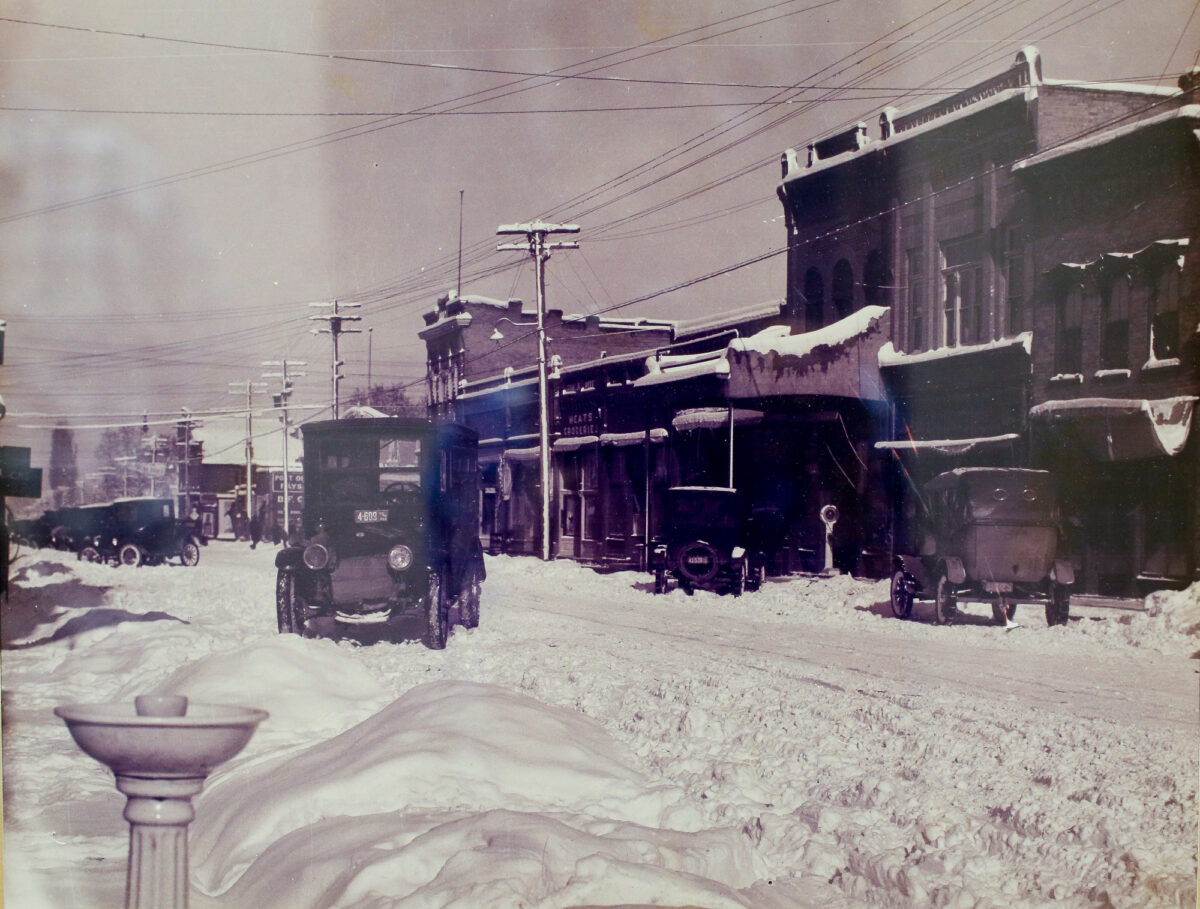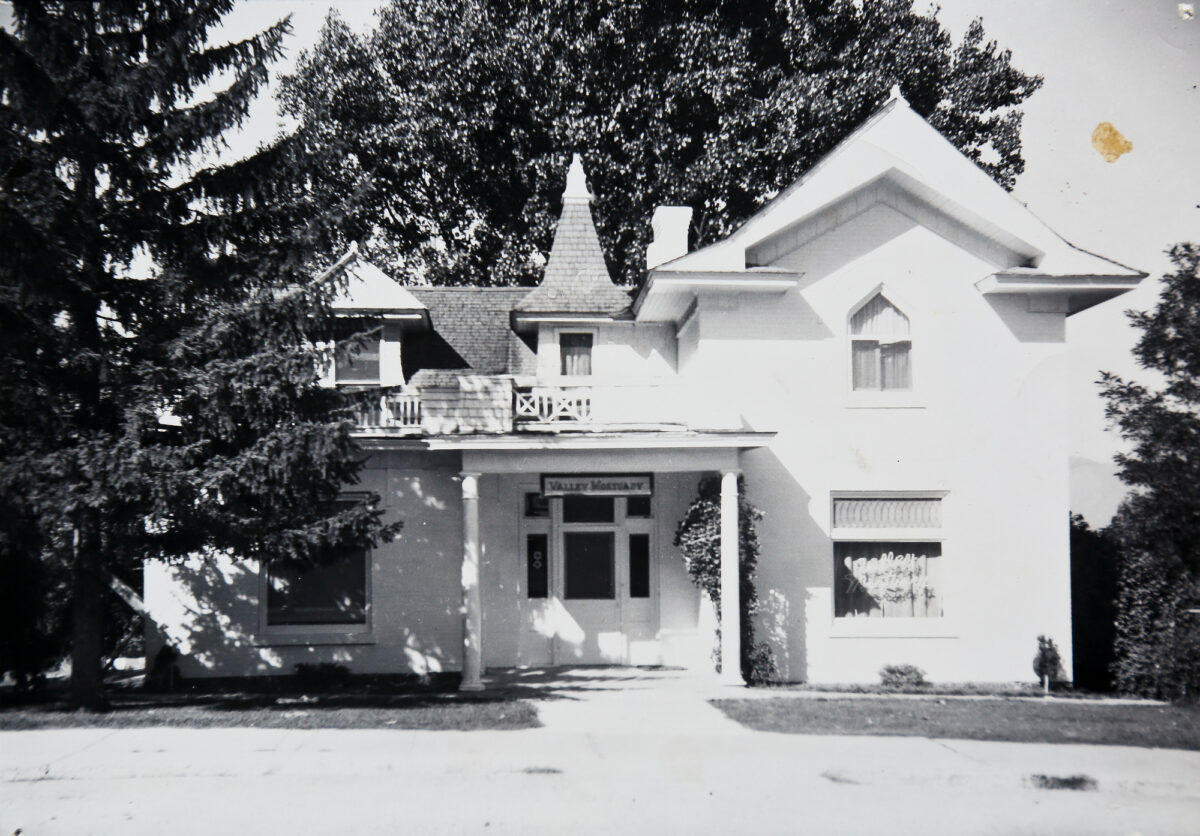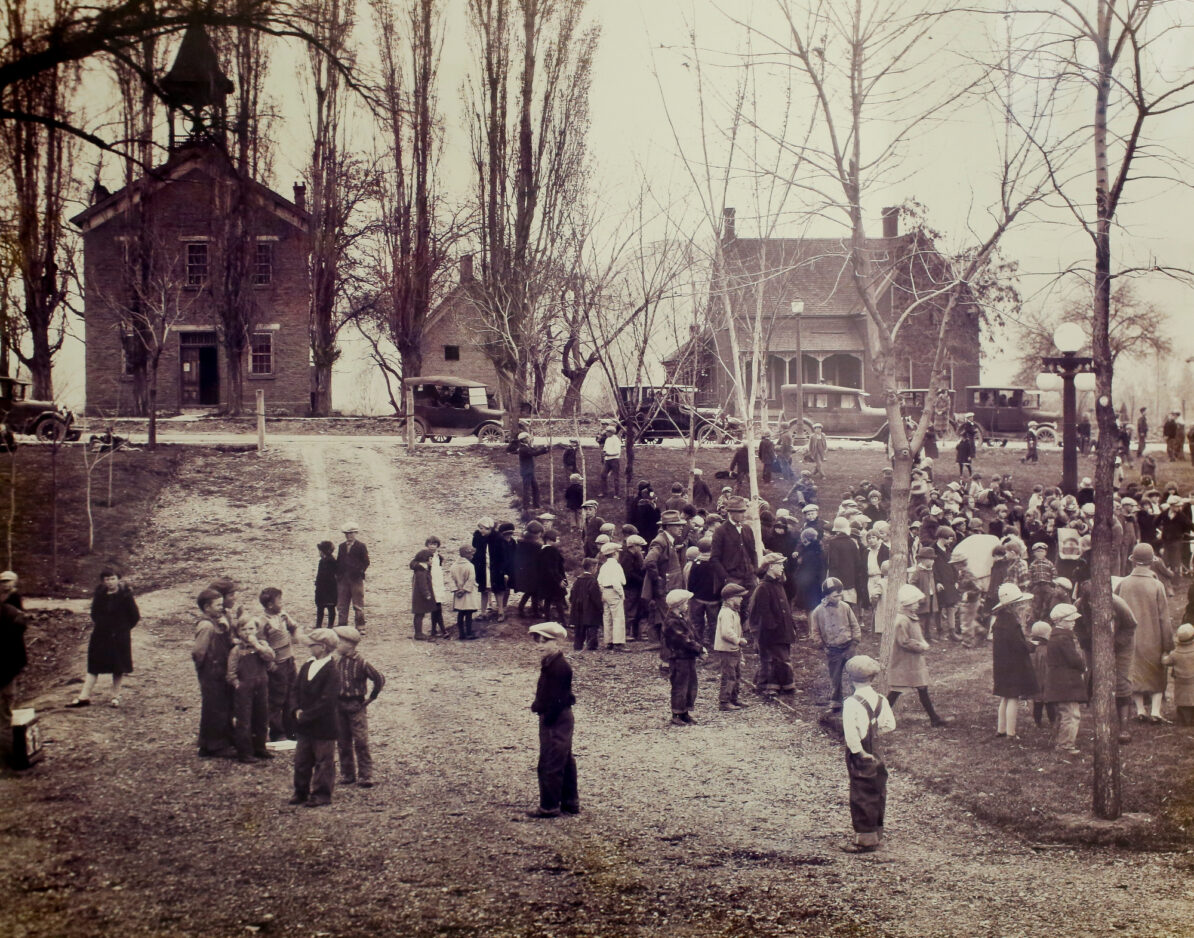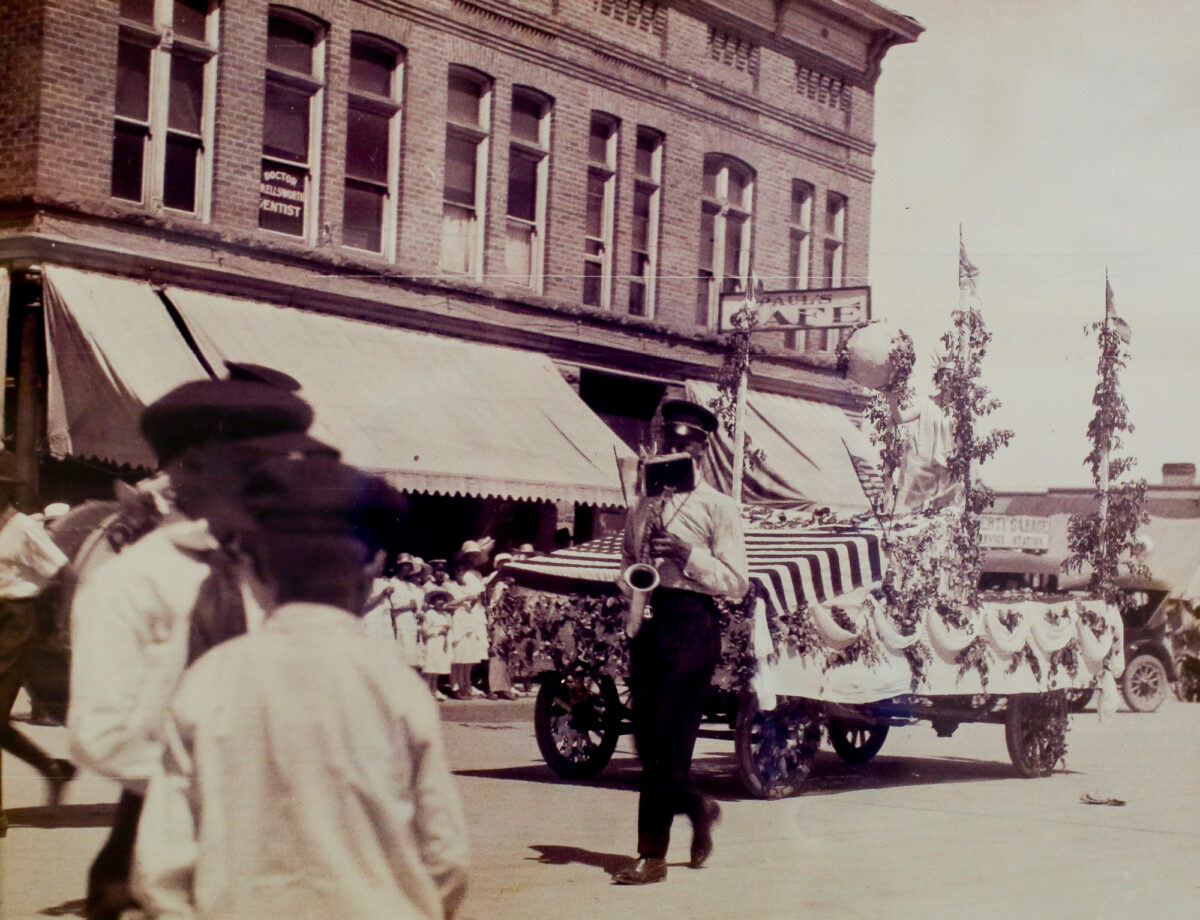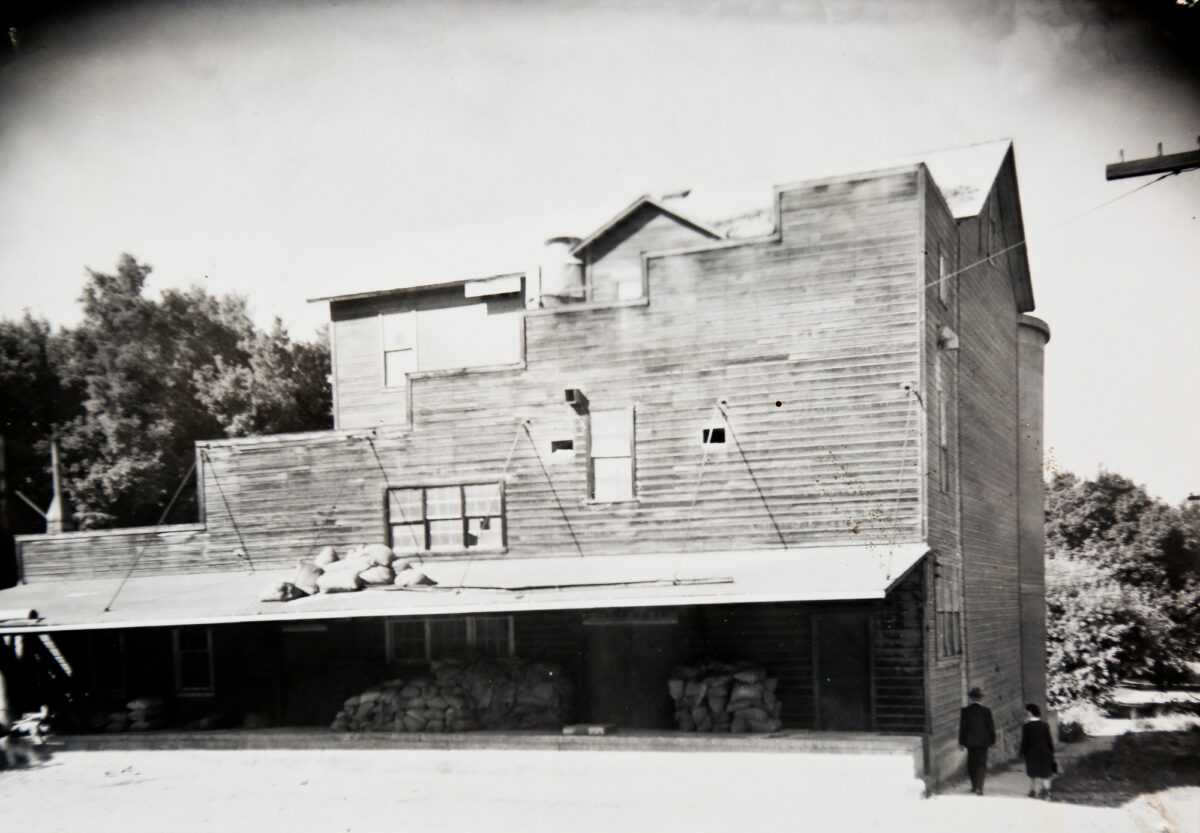Payson history: From promising pioneers to temple development
The city of Payson, Utah, is nestled among the foothills of the Wasatch Range in the majestic Rocky Mountains. Nearly 20,000 people call it home beneath the 11,928 foot high peak of Mount Nebo. Its newest claim to fame is the beautiful LDS Payson Utah Temple situated near Interstate 15.
Originally inhabited by the Ute Indians, the area of Payson was visited by white men as far back as 1776, not long after the Declaration of Independence was adopted in the United States. According to “Payson – An Historical Summary” written by L. Dee Stevenson, the expedition led by two Catholic priests — Fathers Sylvester Veliz de Escalante and Francisco Atanasio Dominguez — arrived that summer searching for a route from Sante Fe to Monterey, California. They camped with their party of Spanish explorers by a small stream they named Arroyo de San Andres which they called a pleasant, beautiful, fertile place on September 26, 1776.
The small stream was Peteetneet Creek named by the local Indians; it means “Little Water.” It was so named after local Chief Peteetneet who lived in the area.
Mormon Pioneers
Some 70 years later, Mormon pioneers entered Salt Lake Valley, 60 miles north of Payson. Stevenson reported in his book that Brigham Young, a latter-day Moses to the pioneers, sent a scouting party into the valley south of Salt Lake three days after they arrived on July 24, 1847. Reports of a large lake and numerous streams emptying into the lake from canyons were brought back. The valley was fertile due to the growth of sagebrush in the area. The party thought it was acceptable for cultivation.
Brigham Young selected three families in 1850 to settle the area on the banks of Peteetneet Creek: James Pace, John Courtland Searle and Andrew Jackson. It took the group of 17 a week to travel the 60 miles in three wagons and arrive at what became Nebeker’s Grove.
James Pace was familiar with great responsibility: he had served in the Mormon Battalion during the Mexican War. After his discharge, he returned to Winter Quarters for his family and traveled to Salt Lake Valley. He served as captain of 50 wagons going west to the Great Salt Lake Valley. They arrived in mid-October and he was immediately assigned to lead the way south to establish the new settlement, according to Stevenson.
History gathered by the Preserve America initiative said the pioneers found sage and sunflowers as far as the eye could see. Upon a portion of grounds where the Ute Indians had hunted and fished, they built Fort Peteetneet which evolved into Payson City. The mountains were a vital source of water, timber and granite for the early settlers.
Within days of arriving, Stevenson says in “Payson – An Historical Summary” that the settlers cut poles and built corrals to hold their stock. They surveyed the area and constructed an irrigation ditch that ran near the grove where they camped to carry waters of Peteetneet Creek to fields where they planned to plow and plant. They had arrived late in the fall, so they harvested wild hay that grew north of their camp.
The pioneers lived in their wagons the first few weeks. Cabins were built quickly of logs cut from cottonwood trees that grew along the creek to prepare for the coming winter. These cabins were built approximately on today’s 300 North from 200 West to 200 East. John Courtland Searle and his wife Jerusha Morrison Hill gave birth to the first child in the settlement; their baby was also the first to die at nine days of age, according to information compiled by Craig Lant Shuler and Karen Bray Keeley on rootcellar.us.
During the next few months new settlers entered the area after Brigham Young issued a call. In Dec. 1850 a meeting was held in James Pace’s cabin where a branch of The Church of Jesus Christ of Latter-day Saints was organized – the Pacen Branch with James Pace as president. Later the spelling was changed to Payson. The Payson Branch then became the Payson Ward and was the only ward in the community until 1891.
According to Stevenson’s research, the settlement of Peteeneet Creek was renamed Payson after James Pace in 1851 and incorporated as a city on Jan. 21, 1853. At that time the settlement included Spring Lake Villa to the south and Summit (Santaquin) to the southwest.
Settlers continued to locate in the area over the next few years including five men from the 143 who accompanied Brigham Young and the First Pioneer Company to the Salt Lake Valley on July 24, 1847. From 1852 to 1859 Benjamin Franklin Stewart, Joseph Hancock, Lyman Curtis, Philo C. Johnson and Thomas P. Cloward moved to Payson. Later Benjamin Stewart settled in Benjamin — named after him — and Lyman Curtis settled in Pond Town or what is now Salem.
Stevenson said David Crocket was elected the first mayor of Payson in April 1853; in July 1853 the Walker War with the Ute Indians broke out; peace was negotiated by Brigham Young in 1854. The settlers built a new fort with the creek running through: walls were four feet thick and eight feet high.
Growth and development
According to “Payson: Then and Now,” a grist mill was constructed in 1854. More mills were built during the next 60 years. Other industries included a nail factory, planning mill, furniture factory, tanneries, shoemaking and the manufacture of horse collars. When the railroad came through some of the businesses declined; they could not compete with goods coming by rail from the East. During this time homes were built, city streets aligned, schools built and businesses developed along Main Street. The telegraph came to town in 1866.
Church meetings had been held in homes, public schools and private buildings. A temporary bowery was built near the center of the fort. In 1870 a meeting was held to discuss the first LDS Church building to be constructed. Payson Second Ward was constructed in 1897 and is the oldest LDS Church in Payson still being used today. It has had many remodels throughout 118 years and is affectionately known as the “Green Church,” according to “Payson – An Historical Summary.”
The bowery became the location of the first tabernacle at 182 North Main Street, completed in 1872. It held 800 people, cost $27,447.03 and was dedicated by Quorum of the Twelve Apostle Wilford Woodruff. This structure was destroyed by fire in 1904 and was the site of a new tabernacle dedicated in 1907, which seated 1,000 and cost $20,000. It was dedicated by President Joseph F. Smith. The tabernacle served the community for more than 60 years. It was then demolished in the 1980s according to Stevenson.
Other churches came to the community. Presbyterian Mission and School was established in 1877 and discontinued in 1910. The Methodist Church constructed a building that served as a school in 1890. Lutherans, Roman Catholics, Evangelists and Southern Baptists also located to Payson.
An Opera House opened in 1883 and was the only one south of Salt Lake City. Red velvet curtains and seats trimmed in gold adorned the house. It had a slanted floor and an orchestra pit. A dance floor could be put over the seats to make a dance hall according to “Payson: Then and Now.”
In “Payson – An Historical Summary,” the local school was said to have opened small satellites in each of the four sections of the community between 1863 and 1875. They were named after members of the school trustees: Nebeker, Curtis, Done and Taylor. The small schools were replaced with the larger Peteetneet School in 1901. Central School opened in 1884. It added classes until it was a high school and graduated classes in 1911.
Electric lights were turned on Christmas Eve 1890. Telephones arrived in 1885, but the first telephone exchange was established in 1902.
An interurban railroad between Salt Lake City and Payson was planned by Walter C. Orem in 1903. It was expanded to Payson in 1916 and called the Orem Line. It cut north of Peteetneet School with the depot east of Main Street on 100 North. Immediately 24 trains, then 26 trains a day made the run from Salt Lake City to Payson. During the 1920s an average of 16 to 18 trains ran daily. In 1937 it reached its lowest point of 10 daily trains. The line provided great service for more than 30 years according to “Payson: Then and Now” before being bought up by oil and auto conglomerates.
Modern Day
Payson borders the cities of Salem, Spanish Fork and Santaquin. The area is known as a residential, agricultural and business-oriented community and the gateway to the scenic Mount Nebo Byway. The downtown business district looks nearly the same today as it did 50 years ago. Payson Historic District was named to the National Historic Register in July 2007. Current Mayor Rick Moore, 53, has helped lead the city for six years and is proud of Payson. Moore, a local businessman himself, loves the historic downtown area where so many movies have been filmed.
Of the 200-some businesses in the city, several claim headquarters in Payson, including Rocky Mountain ATV/MC, Liberty Safe & Security and Temkin International, a paper/plastic/printing company with factories around the world. Of course, Walmart made its presence known for the past 12 years. The town has had a hospital for 91 years; it started out in a little house and now MountainStar’s Mountain View Hospital is a three-story building.
“We take pride in about everything we do – I love the atmosphere, the people and we are proud to say, ‘This is my town,'” Moore said.
1850: 17
1851: 400
1860: 830
1870: 1,436
1890: 2,135
1910: 2,397
1930: 3,045
1950: 3,998
1970: 4,510
1990: 8,700
2000: 12,716
2012: 18,938
2015: Nearing 20,000
*Irene Colvin Corbett: A Payson teacher and nurse, Corbett went to London to study. She returned home in 1912 on the Titanic which hit an iceberg and sunk in the Atlantic Ocean according to familysearch.org.
*Daniel Stark: He came on the ship Brooklyn to California. At one point, Brigham Young called those saints to come to Utah to help during Johnston’s Army according to familysearch.org.
*BlackHawk: Buried in BlackHawk Memorial Park two miles south of Payson, he was key figure in Utah’s BlackHawk War, 1865-1872 according to Utah.gov.
*Walkara: This man was BlackHawk’s uncle and Ute Indian leader who led attack on Fort Payson according to utah.gov.
*James Pace: Pace was requested by President Brigham Young to settle Peteetneet Creek with early Mormon pioneers according to familysearch.org.
*Andrew Jackson Steward: Steward had first store in Payson according to familysearch.org.
*Colonel Lorin Johnson: Johnson was awarded Soldier’s Medal, 1943; Awarded Silver Star, 1945; both in World War II. Later his plane crashed in Henry Mountains in 1950. The site designated as Airplane Springs, said Ray Wilson, president of People Preserving Peteetneet.
*Major General Jefferson S. Burton: Appointed Adjutant General of Utah National Guard in October 2012; Ray Wilson said he is responsible for training 7,300 soldiers/airmen.
*Jewel: This singer/songwriter was born in Payson on May 23, 1974 according to biography.com.
*Don Bluth: Bluth is a Disney animator and film producer and worked on films such as “Anastasia,” “An American Tail” and “The Land Before Time.” Bluth lived in Payson for some time during his youth according to Ray Wilson.
*Lee Robert Staheli: A famous cowboy, he performed in rodeos, horse shows and western movies. According to the Peteetneet Museum, he died at age 91 in 2008.
*World Champions still performing: Lewis Field, 5-time PRCA World Champ; Kaycee Field, World Champ bareback rider; Wesley Silcox, World Champ PRCA bull rider.
* Troy Lerwill: Called The Wild Child, this Clown with Bull and Barrel is still performing. He won Comedy Act of Year, six times; NFR Barrel Man, three times; and Coors Man in the Can (barrel) two times according to the Peteetneet Museum.
*John J. McClellan, 1874-1925, served as chief organist, Salt Lake Tabernacle from 1900-1925. Wrote three hymns in present LDS hymnbook, one of which is “Sweet Is the Work.”
*William Clayson, 1840-1887, wrote accompaniment to six hymns (in current hymnbook) written by Joseph L. Townsend, 1849-1942. “Hope of Israel” is one of those. Townsend went on to write more hymns.
*Orson Pratt Huish, 1851-1932, wrote more than 300 songs, most unpublished; one hymn is in current hymnbook, “Come Unto Jesus.”
- Ray Wilson, president of People Preserving Peteetneet.
”Footloose”
A 1984 hit movie filmed in settings of Payson High School, Payson Canyon, Sudsie’s, a local car wash.
”Warning Sign”
A 1985 thriller filmed in Payson.
”Banjo the Woodpile Cat”
A 1975 children’s movie set in Payson.
”Baptists At Our Barbecue”
A 2004 comedy shot on Payson’s historic Main Street.
”The Outlaw Trail”
A 2005 based on legend of famed outlaw Butch Cassidy. Parts filmed at Peteetneet Academy/Museum.
”Hatching Pete”
A 2009 Disney Channel movie used Payson as its setting.
- Ray Wilson, president of People Preserving Peteetneet.
Scottish Heritage Festival, July 10-11, 2015
Salmon Supper, Aug. 7, 2015
Onion Days, Sept. 4-7, 2015 (since 1929)



